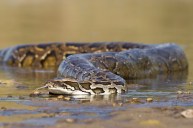Well here's something to "wine" about. Get it? I'll see myself out. But bad jokes aside, this is no laughing matter. An invasive insect could devastate America's wine supply, according to vineyard experts. So wine lovers everywhere better keep a close eye out.
You see, the spotted lanternfly may have made its way to California. The lanternfly has already overran New York, which decreed a kill-on-sight order. Eggs from the fly hitched a wide to California on a shipment last March. At a stop near Lake Taho, someone spotted the eggs from the invasive insect.
They found them on a 30-foot metal art installation. In total, there were about 41 masses of eggs. It turns out that the invasive insect commonly hitches a ride on vehicles. While they caught these eggs, it's possible that more slipped through into California. So the California Association of Winegrape Growers (CAWG) is officially warning people about the possibility. The organization is not happy.
They believe that more of the eggs may have entered California. As the eggs hatch and mature, they believe the invasive impact has "the potential to affect the entire winegrape industry."
Invasive Insect Hitches A Ride
"Spotted lanternflies have been found in 18 states and have proven to pose a serious threat to vineyards," warned Natalie Collins, President of the California Association of Winegrape Growers. These insects love grapevine sap. They also leave behind a residue that will harm a vineyard's plants. "Their activities stress the plants, decrease vine health, and in some cases, can lead to plant death."
The California Department of Agriculture hopes to get ahead of the problem. They believe if they stop the infestation before it takes root then they can save the state's vineyards;
"Early detection is critical to prevent economic and ecological losses," according to the agency. "The public will play a key role in detecting spotted lanternfly and the success of stopping its spread." The flies should start to show up in July if they are indeed in the state. So get your fly swatter ready.
"This is essentially a public service announcement to raise awareness of how to identify a spotted lanternfly and the immediate action to take if discovered," she said.




